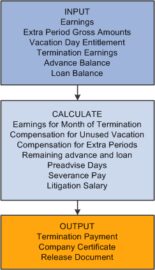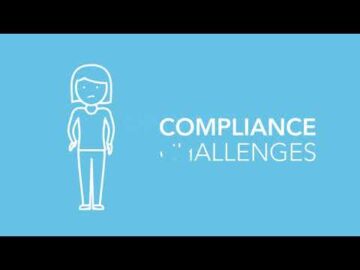
It can be sold at a later date to raise cash or reserved to repel a hostile takeover. Some liabilities are considered off the balance sheet, meaning they do not appear on the balance sheet. Balance sheets should also be compared with those of other businesses in the same industry since different industries have unique approaches to financing.

The return on assets (ROA) ratio serves as a metric for determining the asset performance of an organization. Non-current assets are assets that are not turned into cash easily, are expected to be turned into cash within a year, and/or have a lifespan of more than a year. They can refer to tangible assets, such as machinery, computers, buildings, and land. Non-current assets also can be intangible assets, such as goodwill, patents, or copyrights. While these assets are not physical in nature, they are often the resources that can make or break a company—the value of a brand name, for instance, should not be underestimated.
What Are the Components of Balance Sheet Report?
A balance sheet, along with the income and cash flow statement, is an important tool for investors to gain insight into a company and its operations. It is a snapshot at a single point in time of the company’s accounts—covering its assets, liabilities, and shareholders’ equity. The purpose of a balance sheet is to give interested parties an idea of the company’s financial position, in addition to displaying what the company owns and owes. It is important that all investors know how to use, analyze and read a balance sheet.
Our authors can publish views that we may or may not agree with, but they show their work, distinguish facts from opinions, and make sure their analysis is clear and in no way misleading or deceptive. A balance sheet is a snapshot of the financial state of a company at a single point in time. To take balance sheet reporting up a notch, cloud FP&A software solutions such as Datarails can assist with creating automated financial reports. Equity can also drop when an owner draws money out of the company to pay themself or when a corporation issues dividends to shareholders. And, because a balance sheet is a snapshot of how your business is doing, it’s crucial to know your way around one and be able to parse the info it provides.
- Balance sheets should also be compared with those of other businesses in the same industry since different industries have unique approaches to financing.
- Total liabilities is calculated as the sum of all short-term, long-term and other liabilities.
- This is matched on the liabilities side by $55.2 billion in accounts payable, likely money owed to the vendors and suppliers of many of those goods.
In order for the balance sheet to balance, total assets on one side have to equal total liabilities plus shareholders’ equity on the other side. A balance sheet provides a summary of a business at a given point in time. It’s a snapshot of a company’s financial position, as broken down into assets, liabilities, and equity. Balance sheets serve two very different purposes depending on the audience reviewing them. The balance sheet is a very important financial statement for many reasons. It can be looked at on its own and in conjunction with other statements like the income statement and cash flow statement to get a full picture of a company’s health.
What Is A Balance Sheet? (Example Included)
The balance sheet changes everyday that new transactions are posted, so every day’s picture will be a little different. The long-term debt number on the balance sheet is an aggregate number, which pools all the debt issued by the company. The details of the figure are found in the notes section, which breaks down the debt by issuance.
- This account includes the balance of all sales revenue still on credit, net of any allowances for doubtful accounts (which generates a bad debt expense).
- Because companies invest in assets to fulfill their mission, you must develop an intuitive understanding of what they are.
- It’s a snapshot of all the assets, liabilities, and equity that the company owns on that specific day.
This is the value of funds that shareholders have invested in the company. When a company is first formed, shareholders will typically put in cash. Cash (an asset) rises by $10M, and Share Capital (an equity account) rises by $10M, balancing out the balance sheet.
The second is earnings that the company generates over time and retains. Because companies invest in assets to fulfill their mission, you must develop an intuitive understanding of what they are. Without this knowledge, it can be challenging to understand the balance sheet and other financial documents that speak to a company’s health. Whether you’re a business owner, employee, or investor, understanding how to read and understand the information in a balance sheet is an essential financial accounting skill to have. This account includes the balance of all sales revenue still on credit, net of any allowances for doubtful accounts (which generates a bad debt expense). As companies recover accounts receivables, this account decreases, and cash increases by the same amount.
Run a Balance Sheet report
We accept payments via credit card, wire transfer, Western Union, and (when available) bank loan. Some candidates may qualify for scholarships or financial aid, which will be credited against the Program Fee once eligibility is determined. Please refer to the Payment & Financial Aid page for further information. Typically, a balance sheet will be prepared and distributed on a quarterly or monthly basis, depending on the frequency of reporting as determined by law or company policy.
The remaining amount is distributed to shareholders in the form of dividends. The biological assets section is the most unique item in the balance sheet of WEF. Biological assets are the forest land owned by the company for timber production. The asset is carried at fair value on the balance sheet, which means that number is subjective. The details can be a useful guide to revaluing the assets during analysis.
This exercise gives us a rough but useful approximation of a balance sheet amount for the whole year 2020, which is what the income statement number, let’s say net income, represents. In our example, the number for total assets at year-end 2020 would overstate the amount and distort the return on assets ratio (net income/total assets). How assets are supported, or financed, by a corresponding growth in payables, debt liabilities and equity reveals a lot about a company’s financial health. For now, suffice it to say that depending on a company’s line of business and industry characteristics, possessing a reasonable mix of liabilities and equity is a sign of a financially healthy company. The income statement illustrates the profitability of a company under accrual accounting rules. The balance sheet shows a company’s assets, liabilities, and shareholders’ equity at a particular point in time.
Balance Sheet
The balance sheet is the most important of the three main financial statements used to illustrate the financial health of a business. Working capital refers to the difference between an organization’s current assets (i.e., cash, investments, annual revenue) and current liabilities (i.e., payables owed to suppliers). Working capital is an indication of an organization’s cash conversion cycle and an indication of how well a company can manage two very important assets — accounts receivable and inventory.
These ratios can give investors an idea of how financially stable the company is and how the company finances itself. Activity ratios focus mainly on current accounts to show how well the company manages its operating cycle (which include receivables, inventory, and payables). These ratios can provide insight into the company’s operational efficiency.
It does not show all possible kinds of assets, liabilities and equity, but it shows the most usual ones. Monetary values are not shown, summary (subtotal) rows are missing as well. At the center of everything we do is a strong commitment to independent research and sharing its profitable discoveries with investors. This dedication to giving investors a trading advantage led to the creation of our proven Zacks Rank stock-rating system. Since 1988 it has more than doubled the S&P 500 with an average gain of +24.26% per year. Zacks Rank stock-rating system returns are computed monthly based on the beginning of the month and end of the month Zacks Rank stock prices plus any dividends received during that particular month.
In general, a liability is classified as current when there is a reasonable expectation that the liability will come due within the next year, or within the operating cycle of the business. A balance sheet is a snapshot in time rather than a representation of long-term fiscal trends. However, comparing your balance sheet with previous ones can help you parse those applying for adp grants long-term trends and results as well. Capitalization refers to the amount of debt compared to the equity that a company has on its balance sheet. There are a number of high-quality accounting software solutions available. To find out which is the right option for your business, check out our article detailing the best accounting software for small businesses.
With a greater understanding of a balance sheet and how it is constructed, we can review some techniques used to analyze the information contained within a balance sheet. Current assets have a lifespan of one year or less, meaning they can be converted easily into cash. Such asset classes include cash and cash equivalents, accounts receivable, and inventory. Explore our online finance and accounting courses, which can teach you the key financial concepts you need to understand business performance and potential. Accounts Payables, or AP, is the amount a company owes suppliers for items or services purchased on credit. As the company pays off its AP, it decreases along with an equal amount decrease to the cash account.

Current liabilities are due within one year and are listed in order of their due date. Long-term liabilities, on the other hand, are due at any point after one year. Goodwill is checked for impairment every year and is written-off when it is no longer valuable. Details about the value of goodwill and its components are listed in the notes to the balance sheet. Since goodwill impairment is a value judgment, it is important to read the goodwill with notes section of the balance sheet. Continuing with the accounts receivable example, the quality of receivables can often be found in the notes to the balance sheet, which breaks down the receivables by age and credit quality.
This statement is a great way to analyze a company’s financial position. An analyst can generally use the balance sheet to calculate a lot of financial ratios that help determine how well a company is performing, how liquid or solvent a company is, and how efficient it is. In this example, Apple’s total assets of $323.8 billion is segregated towards the top of the report. This asset section is broken into current assets and non-current assets, and each of these categories is broken into more specific accounts.
Carlyle Reports Second Quarter 2023 Financial Results The … – Carlyle
Carlyle Reports Second Quarter 2023 Financial Results The ….
Posted: Wed, 02 Aug 2023 10:00:00 GMT [source]
If splitting your payment into 2 transactions, a minimum payment of $350 is required for the first transaction. The applications vary slightly from program to program, but all ask for some personal background information. If you are new to HBS Online, you will be required to set up an account before starting an application for the program of your choice.

